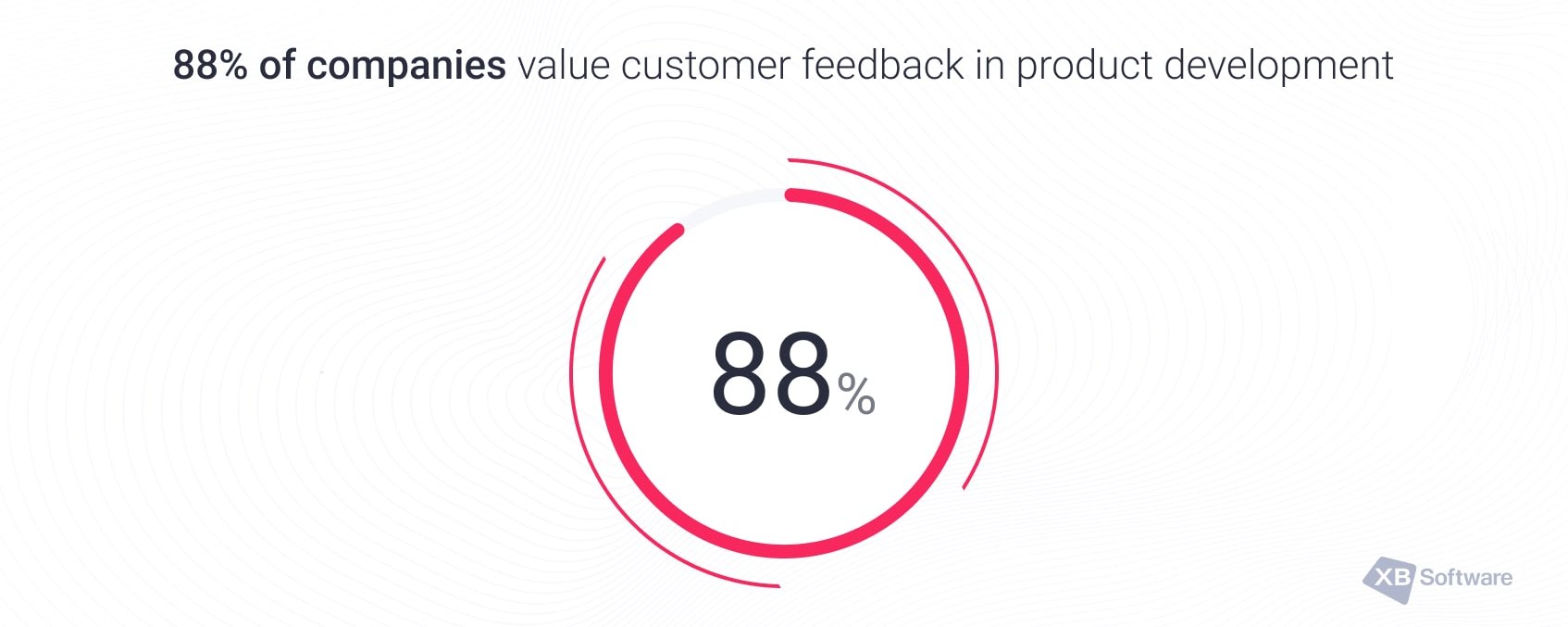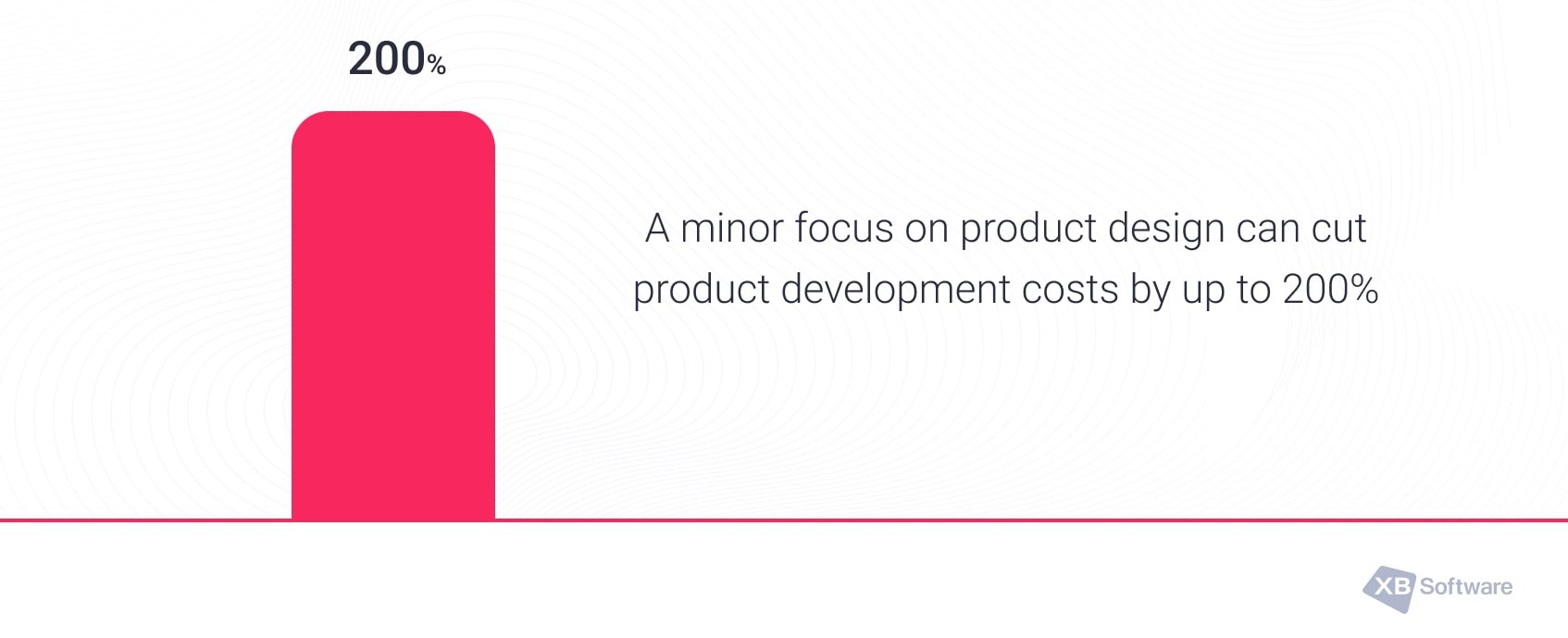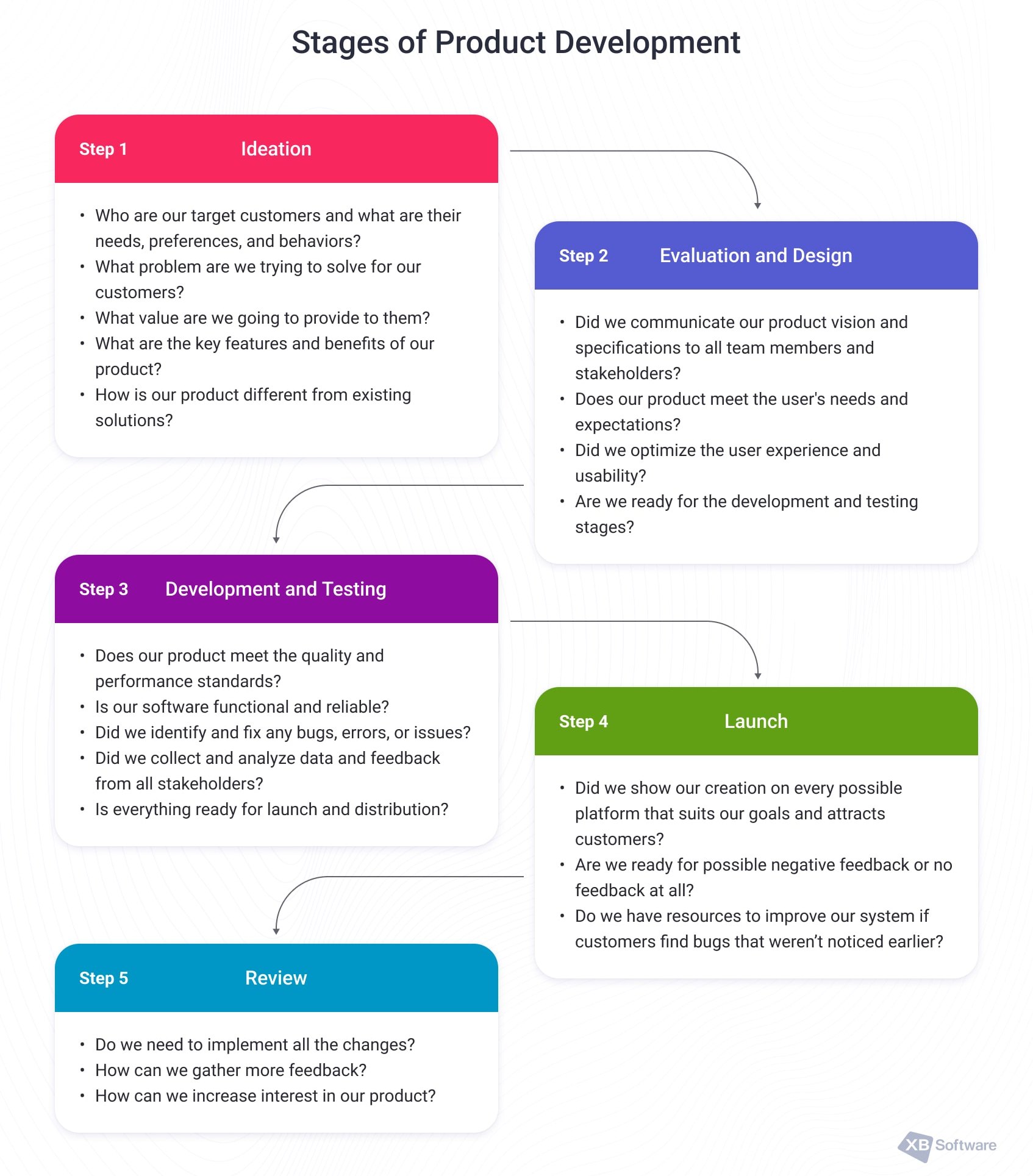Summary
The article by XB Software outlines a comprehensive approach to product development, emphasizing the importance of structured methodologies and cross-functional collaboration. It details key stages such as ideation, evaluation and design, development and testing, and highlights the roles of various team members including product managers, marketers, and support staff. The piece also discusses challenges like communication breakdowns and technical debt, offering strategies to mitigate these issues and ensure successful product outcomes.
Product development is the process of creating or improving a product or service, from the initial idea to the final launch. It can be a lot of fun, but also a lot of work. Did you ever think that product development is like cooking a meal? You need to have a good recipe with consequent steps, fresh ingredients that you know how to cook, and the right tools that will help you to simplify and speed up the overall process. But you also need to be creative, flexible, and willing to experiment. Sometimes, you might end up with a masterpiece that everyone loves. Other times, you might end up with a disaster that nobody wants to eat, learn from your mistakes, and try again. See, it can be hard to tell whether it is about cooking or product development.
On a serious note, product development is not a piece of cake. It takes a lot of hard work, brainstorming, and collaboration to turn your vision into reality. Therefore, in our article, we decided to cover this process in detail and create a how-to guide with meaningful tips, so let’s start!
What Is Product Development, Software Development, and Product Management?
You can’t run from the basics, so here we are. Product development is the process that involves a lot of steps, such as coming up with an idea, making a business case, developing the product, testing it, and finally launching it. It is a complex procedure that requires all the participants to brainstorm, think outside of the box, and be on the same page. Quite intense, isn’t it?
Let’s say you have a cool idea and are wondering how to develop a new product that you want to share with the world. Or, maybe you want to modernize an existing product that you think can be better. In these cases, product development comes to the rescue, as it:
- makes your customers happy and loyal,
- beats your competitors and lets you gain more market share,
- helps you to make more money and profit,
- and allows you to adapt to changing customer needs and market trends.
Sometimes, the product development process can be called new product development, or NPD, and the terms are often used interchangeably. However, there is a subtle but simple difference.
Product development is a broader term, and an NPD is a part of it. During the product development process a team creates or improves a product that already exists in the market or in the company. It involves analyzing customer feedback, market trends, and competitive advantages, and making changes and enhancements to the product, such as adding new features, functionalities, or designs.
New product development refers to the process of creating a product that is new to the market or to the company. It means that the team has to perform a bit different tasks. Besides such activities as product design and development, product testing and launch, and the creation of marketing strategies and supporting activities, you have to identify a market opportunity, generate and validate innovative ideas, etc. The term has a more specific meaning, however can be easily called the product development process, as we all understand what it entails.
It can be a little bit more difficult to distinguish the product development process from software development and product management. We got you!
Imagine you are planning a trip to the moon. You have a big dream, a big budget, and a big team. But who does what, and how do they work together? Here are some of the roles involved in your mission: and how they are similar to product development, software development, and product management:
Product Development. This is the task for an astronaut, the person who actually goes to the moon, and experiences the journey first-hand. They are the end-user, the customer, the one who benefits from the product. They have needs, wants, and expectations that need to be met. This is basically the product development team. They create or improve the product that solves the customer’s problem and fulfills their needs.

Software Development. Here comes the engineer, the one who designs and builds the rocket, the spaceship, and the lunar module. A software developer makes the product work, using their technical skills, tools, and methods. They have specifications, requirements, and standards that need to be followed. While they are writing and testing the code, designing and implementing the architecture, and ensuring the quality and performance of the product.

Product Management. Don’t forget about the manager, because someone needs to oversee and coordinate the whole project, from start to finish. A product manager defines the vision, scope, and goals of the product and communicates them to the team and the stakeholders. They research the market and the customers, prioritize the features and tasks, and launch and market the product.

Which Challenges May a Team Struggle With?
Despite all the fun of sharing ideas with each other and creating something new, the product development process can also be challenging and risky. It requires a lot of resources, time, and creativity. A lot of uncertainties and assumptions can lead to failure or disappointment. But it can also be an opportunity to learn, grow, and overcome. That’s why you need to use effective methods and tools to manage your product development process and deliver successful results. Therefore, let’s see which challenges a product development team may run into and how you can deal with them.
Communication Breakdown
Having poor or unclear communication with your team, customers, or stakeholders causes misunderstandings, conflicts, and development errors. It’s like playing a game of broken telephone, where the message gets distorted or lost as it passes from one person to another. You end up with a product that nobody asked for, wanted, or understood. To avoid breakdown, you need to communicate frequently, clearly, and effectively. You can use tools, like chat, email, video call, or project management software to keep everyone on the same page.
Scope Creep
When you keep adding more features, requirements, or complexity to your product than you originally planned, product scope keeps expanding. It can cause delays, confusion, and wasted resources. It’s like ordering a pizza, and then adding more toppings, cheese, and crust every time the delivery guy calls you. You end up with a huge, expensive, and messy pizza that nobody can finish. To avoid scope creep, you need to define your product scope clearly, prioritize your features, and stick to your plan. You can always add more toppings later, if you really need them.
Read Also The Intricate Art of Maximizing Value. How To Make Every Coin Spent Worth its Weight In Gold
Technical Debt
Poor or outdated code, design, or architecture leads to bugs, performance issues, and security risks, which is why you should avoid these issues like fire. It’s like having a closet full of old clothes, shoes, and accessories that you never wear, but can’t get rid of. You end up with a cluttered, dysfunctional, and vulnerable product that nobody can maintain or update. To avoid technical debt, you need to follow best practices, standards, and guidelines for your product development and prioritize perfect code over speedy delivery. You can proceed with code review, testing, or code refactoring to keep your product clean and fresh.
Market Fit Issue
Sometimes, you have a product that doesn’t match the needs or expectations of your customers or the market. As a result, your company ends up with low demand, sales, or retention. You basically have a product that nobody needs, wants, or likes. Nobody buys, uses, or recommends it. To achieve market fit, you need to validate your product idea, research your customers and competitors, and test your product with real users. You can use surveys, interviews, or analytics to keep your product relevant and valuable.

Source: GITNUX MarketData Report 2024
Who Is Involved in the Product Development Process?
Product development is a team sport. It involves many people with different roles, skills, and responsibilities working together to create or improve a product that meets the wants of customers. Therefore, we want to show you the key players in the product development process and explain what they do and how they collaborate. Let’s get to know them!
- Product Manager. This is the leader, the head, the maestro of the product development team. Their task is to define the product vision, product development strategy, and product roadmap, and manage the entire product lifecycle. They also communicate with the customers, stakeholders, and other teams to gather and prioritize the requirements, feedback, and expectations.
- Product Designer. It is impossible to forget the creative mind of the team, because they are responsible for designing the user interface, user experience, and functionality of the product. They are able to conduct user research, develop prototypes, wireframes, and mockups. They are a great asset in testing and validating the product design with the users.
- Product Developer. Another important player in the team. This technical expert develops the product according to the set requirements, tests it, and finally deploys. By using coding languages, frameworks, tools, and platforms, they implement product features and ensure the quality and performance of the product is high.
- Product Marketer. The product marketer is the storyteller of the product development team. They are responsible for marketing and selling the product to the target customers and increasing the market share and competitive advantage of the product. They also create and execute the marketing strategy, plan, and campaigns, and measure and optimize the results.
- Product Support. The product support agents are the helpers of the team. They provide customer service, maintenance, and updates for the product and ensure customer satisfaction and retention. They are the chain that connects customers and product developers, who are able to solve issues that the customers may have with your product.
These are some of the main roles in the product development process, but there may be others depending on the size, type, and complexity of the product and the organization. The product development team may also collaborate with other teams, such as sales, finance, legal, or operations, to ensure the success of the product.
Read Also Making Your Team Bigger the Most Efficient Way. How IT Staff Augmentation Works
Which Product Development Frameworks to Use?
Product development frameworks serve as the special ingredient that enables companies to create fantastic new products. The product development process is a dynamic and collaborative process that requires constant communication, coordination, and feedback among the team members and other stakeholders, which is why product development frameworks act as a set of instructions to make the process easier. The key is to identify the perfect components, blend them skillfully, and present a top-notch product that resonates with customers. Therefore, a methodology chosen by your team will lead through the entire product development journey, starting from generating ideas to introducing the final product.
There are many types of product development frameworks, each with its own specifics. Agile, Lean, and Design Thinking are the most popular ones, however, there are also other interesting options. So, let’s look at which special ingredient you may use, put on your apron and prepare to whip up some groundbreaking innovation.
Lean
Lean is like the efficiency expert of product development that focuses on cutting out waste and maximizing value. If you choose this methodology, the process will be all about streamlining procedures, eliminating unnecessary steps, and delivering products that hit the mark without any extra fluff. With Lean, teams work smart, not hard.
Some companies, usually startup businesses, decide to go for the Lean Startup option instead of all-too-familiar Lean. This framework is based on the idea of building a minimum viable product (MVP) and testing it with real customers as quickly and cheaply as possible. The goal is to learn from customer feedback and validate your assumptions before investing too much time and money into development. The framework consists of three main steps: build, measure, and learn. You build a prototype of your product, measure how customers react to it, and learn from the results. You then repeat the cycle until you find a product-market fit.
The main difference between Lean and Lean Startup is that Lean is a methodology focused on maximizing value and minimizing waste in processes, while Lean Startup is a specific approach to launching new products or businesses that combines Lean principles with agile methodologies. It emphasizes rapid experimentation, customer feedback, and validated learning to let your startup team create successful products.
Read Also Fast and Furious: How to Develop Valid Prototype in Less Than 5 Days Following MVP Design Sprint?
Agile
Agile is like the superhero of product development, swooping in to save the day with its flexibility and adaptability. It’s all about breaking down big projects into smaller, manageable chunks called iterations or sprints (usually 1-4 weeks), so teams can move quickly and adjust course by adapting to changing customer needs and requirements. The framework consists of four main values:
- individuals and interactions over processes and tools,
- working product over comprehensive documentation,
- customer collaboration over contract negotiation,
- and responding to change over following a plan.
With Agile, teams are able to collaborate closely, communicate openly, and deliver value to customers faster than a speeding bullet. It is all about being flexible and adapting quickly to changes, like a ninja dodging obstacles.
Design Thinking
Design Thinking is like the creative genius of product development that puts the user at the heart of the process. It is based on the idea of solving problems from a human-centered perspective, which is all about empathizing with users and defining their needs. The methodology helps to ideate innovative solutions, prototype ideas, and test them to create products that truly resonate with customers. With Design Thinking, teams unleash their creativity, think outside the box, and design products that not only look good but also solve real-world problems. It’s like having a magic wand that turns ideas into amazing products that users can’t resist!
Stage-Gate
This product development framework involves breaking the development process into stages, each of them ending in a decision point or gate. At these gates, a cross-functional team evaluates the progress and decides whether to proceed to the next stage, pivot, or stop the project altogether.
To put it simply, Stage-Gate is like the bouncer at the club of product development, making sure only the coolest projects get in. Each stage is a checkpoint where the product team has to impress the judges and show they’ve got what it takes to move forward. The goal is to reduce the risk and uncertainty of product development and ensure quality and alignment. It helps to keep things organized, make smart decisions, and ensure that only the best ideas make it to the dance floor of product success.
Dual-Track Agile
Imagine juggling two balls at the same time – one for exploring cool ideas and the other for bringing those ideas to life. This is what the Dual-Track Agile approach is about. The discovery track requires exploring and validating ideas through research, prototyping, and testing, while the delivery track focuses on implementing and delivering the features based on the validated ideas. As a result, it helps cross-functional teams balance innovation with execution, ensuring that they are building the right product the right way.

Source: Zipdo Product Development Statistics
As you see, the pool of options is diverse. Each framework has its own strengths and weaknesses, and you should choose the one that suits your product, team, and organization best. Of course, you can also mix and match different methodologies or create your own custom option to fit your needs. The important thing is to have a clear and structured process that helps you develop and launch a successful product.
What Are the Stages of Product Development?
Now that you have managed to define the goal, assemble a team of needed specialists, and choose the relevant methodology, let’s see what should be done in order to lead your product from an idea to the finished product that shines like a diamond among other options on the market.

Step 1. Ideation
Your team should start with brainstorming to generate ideas for your product. To make the process more streamlined, we recommend your team to find the answers to the following questions:
- Who are our target customers and what are their needs, preferences, and behaviors?
- What problem are we trying to solve for our customers?
- What value are we going to provide to them?
- What are the key features and benefits of our product?
- How is our product different from existing solutions?
Tip: You can use various techniques, such as mind mapping, sketching, prototyping, even surveys to explore different possibilities and concepts. Don’t forget to do some market research and customer analysis to validate your ideas and identify the problems and needs that your product will address.
Step 2. Evaluation and Design
The next step in product development is to validate your product idea to know what to design. Without evaluating the idea you chose and understanding if it fits the requirements and the experience your team has, it might be difficult to create a detailed and visual representation of how your product will look, feel, and function. The following questions can be helpful to lead you the right way:
- Did we communicate our product vision and specifications to all team members and stakeholders?
- Does our product meet the user’s needs and expectations?
- Did we optimize the user experience and usability?
- Are we ready for the development and testing stages?
Tip: You can use different surveys, interviews, focus groups, or experiments to gather feedback and data from your potential customers and stakeholders. You should also do some competitive analysis and SWOT analysis to assess your strengths, weaknesses, opportunities, and threats in the market. Besides that, identify and prioritize the most important features and benefits of your product.
Read Also Business Environmental Analysis: Types, Environments, and Analysis Models (PESTLE, SWOT)
Step 3. Development and Testing
Now, it’s the time to finally develop your product to turn its design into a functional and usable end result. It is important to check and verify that your software works as intended and meets all the requirements and expectations. Using different types of testing (unit testing, integration testing, system testing, user acceptance testing) is vital during this stage.
Don’t forget about these questions:
- Does our product meet the quality and performance standards?
- Is our software functional and reliable?
- Did we identify and fix any bugs, errors, or issues?
- Did we collect and analyze data and feedback from all stakeholders?
- Is everything ready for launch and distribution?
Tip: Consider following some best practices, such as user-centered design, usability testing, and quality assurance, to ensure that your product meets the expectations and requirements of your customers and stakeholders. Also, think about hiring dedicated developers if your team lacks specialists in certain areas.
Step 4. Launch
This is it. The platform or application you built is ready to see the world. If you followed all the prior steps thoroughly, it would be a lot easier to release your product to the market. At this step, you have less questions and more waiting, however, asking yourself the following questions may be useful later:
- Did we show our creation on every possible platform that suits our goals and attracts customers?
- Are we ready for possible negative feedback or no feedback at all?
- Do we have resources to improve our system if customers find bugs that weren’t noticed earlier?
Tip: To launch your product, you can use tools like marketing channels, strategies, or campaigns. You can also use various metrics, including sales, conversions, or retention to monitor and measure the success of your product launch and customer satisfaction.
Step 5. Review
This is the stage where you gather all the analytics and details on your product launch to improve it for better results. Nothing comes into the world perfect at the start, some issues may easily arise in the process. Collect and analyze data and insights from your customers and stakeholders and implement those changes and enhancements that matter. The questions are the following:
- Do we need to implement all the changes?
- How can we gather more feedback?
- How can we increase interest in our product?
Tip: You can use various techniques, such as analytics, surveys, reviews, or interviews. Also, don’t stop communicating and collaborating.
After all the product development process, supporting stages come to the light, which may include different activities taken from previous steps. So, be prepared to test and fix bugs, improve functionality and showcase your product everywhere possible.
Which Path to Choose: Outsourcing Team or In-House Team?
While considering all the intricate details of the product development process, you won’t be able to avoid this question. To help our readers make the choice, we already covered this topic thoroughly and found out the pros and cons of both outsourcing and in-house teams. As an IT outsourcing company, we gather feedback from our clients, and they say that they choose our services over the in-house development teams, because it leads to more and faster results with less struggles and resources.
And, this is the truth that many statistics analyzed by different companies show. The proof is in plain sight:
- 70% of companies find outsourcing cost-effective, as it reduces the costs of hiring in-house staff (Radix);
- 92% of G2000 companies use IT outsourcing (ISG);
- 3 in 5 organizations turn to outsourcing for app development (back4app);
- 3 most crucial areas within IT outsourcing: administration/support outsourcing, application (development and maintenance) outsourcing, and web hosting (PT).
Conclusions
In a nutshell, diving into the world of product development is like embarking on an epic adventure. Having relevant tools and a map in your backpack will help you to conquer any challenge that comes your way. Remember, it’s all about teamwork, creativity, and staying laser-focused on what your customers want. So, gear up, embrace the journey, and get ready to unleash your inner product development superhero.
If you need any assistance during the software product development process, you can contact us, and our developers will be glad to be a member of your party in this exciting quest.